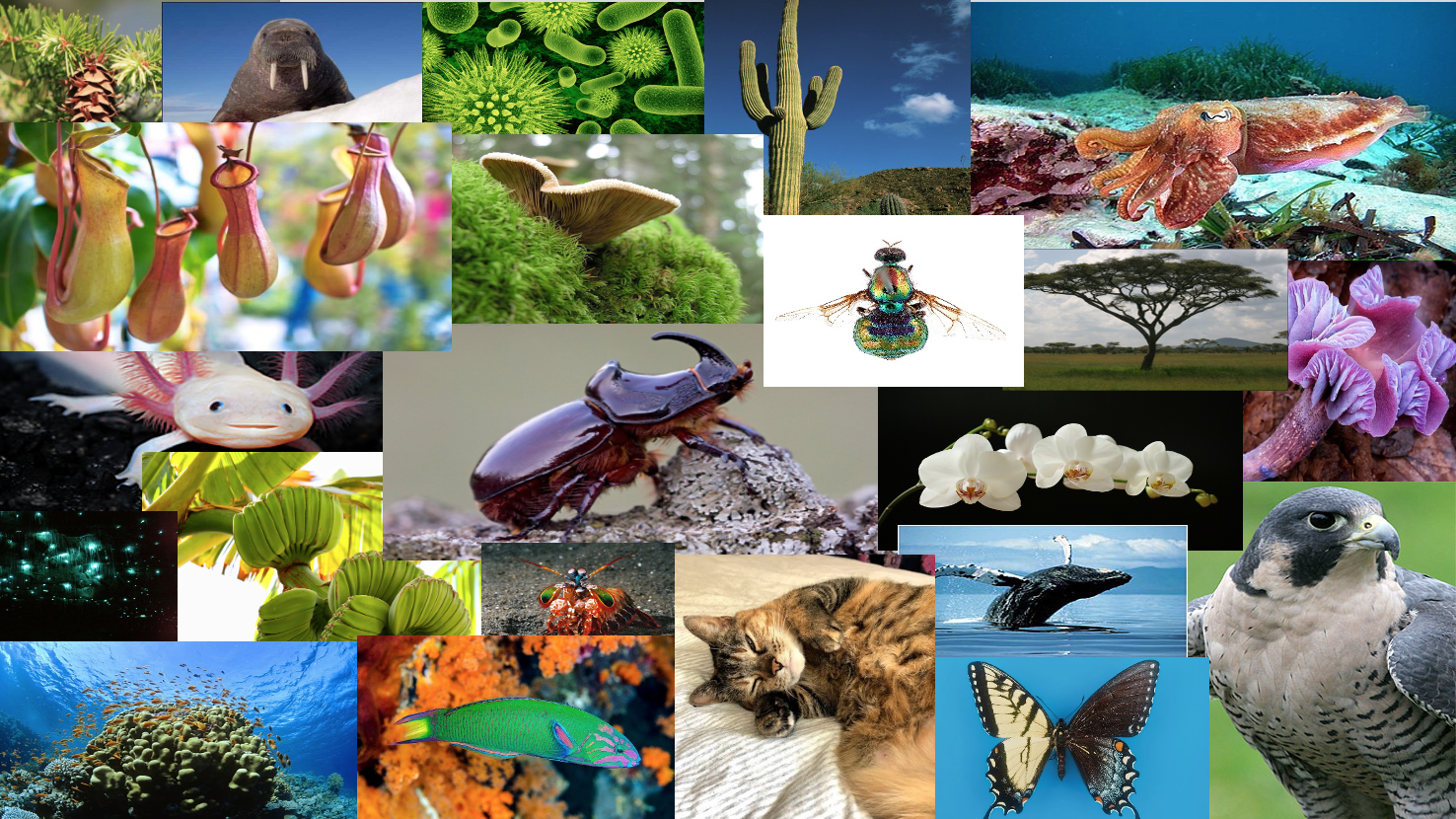Featured Image: Collage of Life. Image courtesy Bryan K. Lynn.
Paper: Methane formation driven by reactive oxygen species across all living organisms
Authors: Leonard Ernst, Benedikt Steinfeld, Uladzimir Barayeu, Thomas Klintzsch, Markus Kurth, Dirk Grimm, Tobias P. Dick, Johannes G. Rebelein, Ilka B. Bischofs, Frank Keppler
You may have heard how methane is a “potent greenhouse gas.” But what does that mean? Even though there are fewer molecules released in our atmosphere when compared to carbon dioxide, methane holds onto heat 25 times more effectively than carbon dioxide. In other words, if carbon dioxide acts as a linen sheet around Earth, then methane is akin to a downy comforter.
Previously, it was widely accepted that only single-cell microbes produced methane. Now, Ernst and colleagues have identified a biological process capable of forming methane that likely occurs in every living thing, arguing that plants, animals, and fungi also create methane on a regular basis. As humanity continues to navigate climate change, these findings will give other scientists and policy makers a clearer (and novel) idea of methane sources of Earth.
There are three categories, or domains, living things can be organized into based on shared characteristics. These domains are Eukarya, Archaea, and Bacteria. Eukarya includes humans, animals, plants, and fungi, where the vast majority breathe oxygen to gain energy from their food. Archaea are single-celled and have a myriad of complex and profoundly unique ways to obtain energy. Bacteria are the most abundant organisms on Earth and showcase diversity and complexity in the way they use energy from their food source of organic matter.
Sometimes Archaea and Bacteria work together in partnerships to capture the energy released as they break down organic matter. In doing so they transform organic matter into methane with a process that isn’t spontaneous, or highly unlikely to happen without outside assistance. For example, a pot of water won’t randomly boil itself on the countertop, rather it has to receive heat (or outside assistance) from a stove burner. Because these microbes don’t have a range to “cook” their food, they use microscopic structures known as enzymes, which act as the outside assistance to create methane from organic matter.
However, Ernst and colleagues identified that a known process (called Fenton Chemistry) creates an environment where methane production is spontaneous. This environment is present in all living organisms because of standard cell conditions that manage oxygen. Oxygen is very capable in deconstructing food to gain energy, yet this destructive quality is indiscriminate and may attack the cell’s structures if mismanaged. Therefore, Eukaryotes must balance their use of oxygen and disarm oxygen byproducts known as reactive oxygen species (ROS) using metals, such as iron. Much like Owen Grady (played by Chris Pratt) in Jurassic World who uses a hunk of meat to control his dinosaur, Eukaryotic cells toss iron atoms to the ROSs, which keeps them from harming our cell structures. This process, called Fenton Chemistry, occurs in all organisms that use oxygen and has been known about since 1876, yet it was only recently that Ernst and colleagues recently identified these conditions are also ideal for spontaneous methane formation.
To determine spontaneous methane formation, the team used the molecular tool called stable isotope labeling. Essentially, they fed cells organic matter that contained heavier carbon atoms, or isotopes. Then in a mix of single cells and modified organic matter, they assessed whether the methane was produced from the heavier carbon in the organic matter under several conditions, comparing oxygen and iron availability, temperature, and cell activity. Furthermore, they labeled additional organic matter that contains nitrogen and sulfur atoms as sources of energy cells are capable of using in addition to carbon-only organic matter. They determined that single cells across all three domains of life are capable of producing measurable methane in essentially every tested scenario.
Identifying the spontaneous formation of methane across all living cells may not be as exciting as tossing meat to dinosaurs. But with their research, Ernst and colleagues have steered methane and climate science in a new direction, with scientists asking questions such as: How does seasonal snow cover impact methane production from trees or grass? Do whales produce more methane than ants? How does Eukaryotic life alter the global cycle of methane?
“Breaking: all living things may produce methane, including you” by Jessica Buser-Young is licensed under a Creative Commons Attribution-ShareAlike 4.0 International License.

